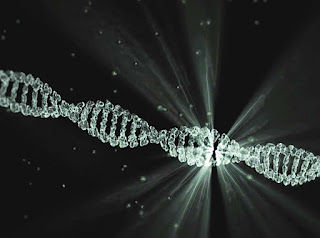complex codes, intricate systems, and captivating secrets. A single glance at this genomic blueprint reveals an elaborate network of information that builds, fuels, and regulates the human body. So, let's dive deep inside the human genome and explore the intriguing world of genetics.
Understanding the Basics of the Human Genome
First things first - what is a genome? In simple terms, a genome is the complete set of genetic material in an organism. For humans, this genetic material is packaged into 23 pairs of chromosomes, each carrying thousands of genes. These genes are made up of DNA (deoxyribonucleic acid), which contains four types of molecules called bases - Adenine (A), Cytosine (C), Guanine (G), and Thymine (T). It's the unique sequence of these bases that forms the genetic code, dictating everything from our hair color and height to our susceptibility to certain diseases.
Decoding the Human Genome: The Human Genome Project
The intricacies of the human genome were largely a mystery until the groundbreaking Human Genome Project. Launched in 1990 and completed in 2003, this international research effort successfully sequenced the entire human genome. The project identified approximately 20,000-25,000 genes in human DNA and determined the sequences of the three billion chemical base pairs that make up the human genome. This monumental achievement revolutionized the field of genetics, paving the way for numerous advances in medicine and biology.
Genes and Proteins: The Workforce of the Body
Our genes do much more than just determine our physical traits. They also instruct our cells on how to make proteins, which are crucial for virtually all biological processes. Genes carry the instructions for assembling amino acids - the building blocks of proteins. It's the type, order, and number of amino acids in a protein that determine its structure and function.
Genetic Variations: The Spice of Life
While all humans share 99.9% of their DNA, it's the remaining 0.1% that makes us unique. These genetic variations are responsible for our differences in appearance, metabolism, and even our risk of certain diseases. Single-nucleotide polymorphisms (SNPs) are the most common type of genetic variation, where a single base pair is altered. Other types include insertions, deletions, and duplications of base pairs or entire genes.
Genomics in Medicine: The Dawn of Personalized Treatment
The knowledge gained from the Human Genome Project and subsequent research has ushered in a new era of personalized medicine. Genomics can help predict an individual's susceptibility to certain diseases, influence preventive measures, and guide the selection of optimal drug treatments. This personalized approach allows for more effective and efficient healthcare, tailored to the specific genetic makeup of the individual.
The Future of Genomics: Unraveling the Mysteries
While we've made significant strides in understanding the human genome, there's still a long way to go. Researchers are now focusing on the vast sections of "non-coding" DNA, once dismissed as "junk DNA," which are now known to play a crucial role in gene regulation. Additionally, efforts are underway to understand the epigenome - chemical modifications to DNA that can influence gene activity without changing the genetic sequence itself.
As we delve deeper into the human genome, the complexities and wonders of genetics continue to unfold. The more we learn, the better equipped we are to combat disease, understand human development, and appreciate the marvels of human biology. The exploration of the human genome truly embodies the fascinating journey of genetics, offering

Comments
Post a Comment